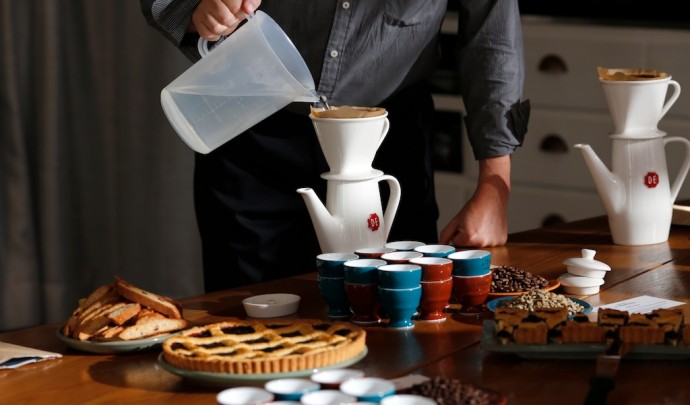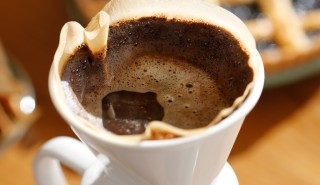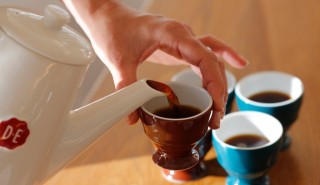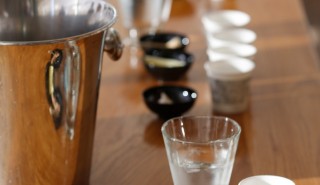
Coffee Cupping
Coffee cupping; the practice of observing the tastes and aromas of brewed coffee
This month Caffé di Manfredi delves into the art of coffee cupping as dictated by Espresso di Manfredi’s master roaster, Wayne Archer.
The starting point on learning to taste coffee, for amateurs or budding experts is the correct use of jargon or the taste attributes. The full list runs to more than 30 terms, acidity, body, to spicy, sour, raw and flat being a few. The terms are used for flavour, smell and after taste descriptions. Each of the 30 or so attributes is given a school mark out of 100, indicating the presence or level of the attribute detected by the taster. When collated the final list of marks becomes the profile of the coffee.
- Acidity – Coffee that has a sharp, pleasant liveliness
- Body – A tactile impression of weight and texture in the mouth
- Flat – A dull lifeless quality due to lack of acidity
- Mellow – A full, well-balanced and satisfying coffee
- Spicy – Coffee of fine aroma or flavour suggestive of spices
- Sour – A distinctly bitter, rancid taste often due to improper processing
The process of tasting coffee is subjective and relies heavily on the flavour memory and experiences of the taster. The sniffing and slurping of an expert tasting coffee is not purely for show. It is about aerating the liquid and saturating the taste sensitive areas of the mouth. Of course you need to spit out the coffee otherwise sleep can be challenged that night!
Step 1
During coffee cupping we first assess the fragrance of the dry ground coffee and that of the brewing coffee. The process of ‘breaking the crust’ is the action of stirring the grounds in the cup releasing the delicious coffee smell. This is the first indicator of the level of quality of the coffee, with sweet or fruity smells indicating Arabica coffee with pungent or harsh smells perhaps leading to sharper tastes.
Step 2
Once the coffees are stirred and the remaining brewing time has elapsed, we then skim off the excess grounds still floating on the surface of the coffee with a spoon. We don’t want to take these in during tasting. Using a spoon we then briskly aspirate the coffee into our mouth, meaning we suck the coffee off the spoon with the traditional slurping sound heard continuously in the Roastery cupping room. This action allows for the coffee to uniformly reach all the areas sensory nerve endings. Holding the coffee for a few seconds we record, mentally, the main characteristics and intensity of the taste.
For best results-
We recommend the best tasting temperature is between 50C to 60C. That way, the coffee is brewed at a relatively lower intensity or strength than a standard cup of coffee. In doing so, low extraction yield and a low level of soluble solids reduce the risk of less dominant flavours being masked. Also, stronger brews increase the risk of over saturation of your taste senses as does over tasting (retasting the same sample several times). So remember, the first taste is the best taste!



